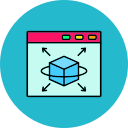In today’s rapidly evolving digital landscape, designing your dream home has never been more accessible or intuitive. The advent of sophisticated digital home design software has revolutionized how homeowners and professionals approach interior layout, space optimization, and architectural visualization. Whether you’re planning a major renovation, constructing a new residence, or simply rearranging your living space, there is a growing suite of digital tools tailored to every need and expertise level. This guide illuminates the top software solutions transforming design workflows, empowering users from initial sketches to immersive 3D walkthroughs.
Advanced Visualization and Rendering
The most distinguished software platforms excel at creating photo-realistic renders that mimic the subtle nuances of real-world materials and ambient lighting. These programs employ high-powered rendering engines, often leveraging ray tracing and global illumination technologies, to produce imagery nearly indistinguishable from actual photographs. The benefit extends beyond mere visuals: clients can make quicker, more confident decisions when they see designs presented with such realism. Additionally, this reduces the risk of costly changes further along in a project, aligning expectations at every stage.

One of the most sought-after features in modern home design software is the ability to drag and drop furniture, fixtures, and architectural elements directly onto floor plans. This intuitive approach mirrors the tactile feeling of rearranging a physical space, allowing users to experiment with layouts, color schemes, and spatial organization quickly and without technical expertise. By lowering barriers for entry, drag-and-drop interfaces democratize the design process, enabling anyone to visualize ideas and iterate rapidly.

Extensive Libraries and Customization
01
A robust digital design workflow relies heavily on access to a comprehensive selection of objects, finishes, and textures. Top software platforms offer rich libraries that include not only furnishings from popular brands but also detailed material samples, lighting fixtures, and exterior landscaping elements. Such variety empowers users to experiment and mix-and-match until they achieve their ideal aesthetic. With these libraries continually updated to reflect current trends and product releases, designers can remain at the forefront of style and innovation.
02
Customization is key for users seeking to push beyond pre-set designs and build something uniquely their own. The best programs incorporate parametric tools, which allow for the precise adjustment of dimensions, materials, and shapes. This means you can tweak cabinetry widths to fit an awkward alcove, alter the color of wall finishes, or resize windows for better daylight—directly within the software. These tools ensure that digital designs adhere closely to real-world constraints and preferences, giving users the confidence that what they create on screen is both beautiful and functional.
03
Interoperability with other design tools and platforms is crucial for advanced projects or when collaborating across disciplines. Leading software supports importing models, textures, and layouts from external sources, as well as exporting finished designs into formats compatible with rendering engines, construction drawings, or even 3D printing. This flexibility provides a bridge between concept development, client presentations, and actionable construction documents, unifying the digital and physical facets of home design for a seamless workflow.
